I have an odd little house in an odd little yard with other peoples yards on all 4 sides. One side is alley way and the person on the other side put up a hedge for privacy, hers not mine, but it helps me out too. The front yard and one of the sides are wood privacy fence.
Then we have the back yard with a rusted, broken down chain link fence. That has maple trees growing through it. Massive maple trees that would cost a fortune to have removed. So we live with the broken down fence.
Most of the time we’ve lived here there was an older woman who lived back there and spent little time in her yard. We could kind of forget there was no privacy back there.
Now we have new neighbors, younger ones who spend time in their yard. Nice neighbors, friendly neighbors, but it’s an adjustment to see people walking around back there. Worse, their property sits a couple of feet higher than mine. So no matter how nice they are, it feels uncomfortable.
Plus the fence is ugly and grass won’t grow back there, but the weeds surely do.
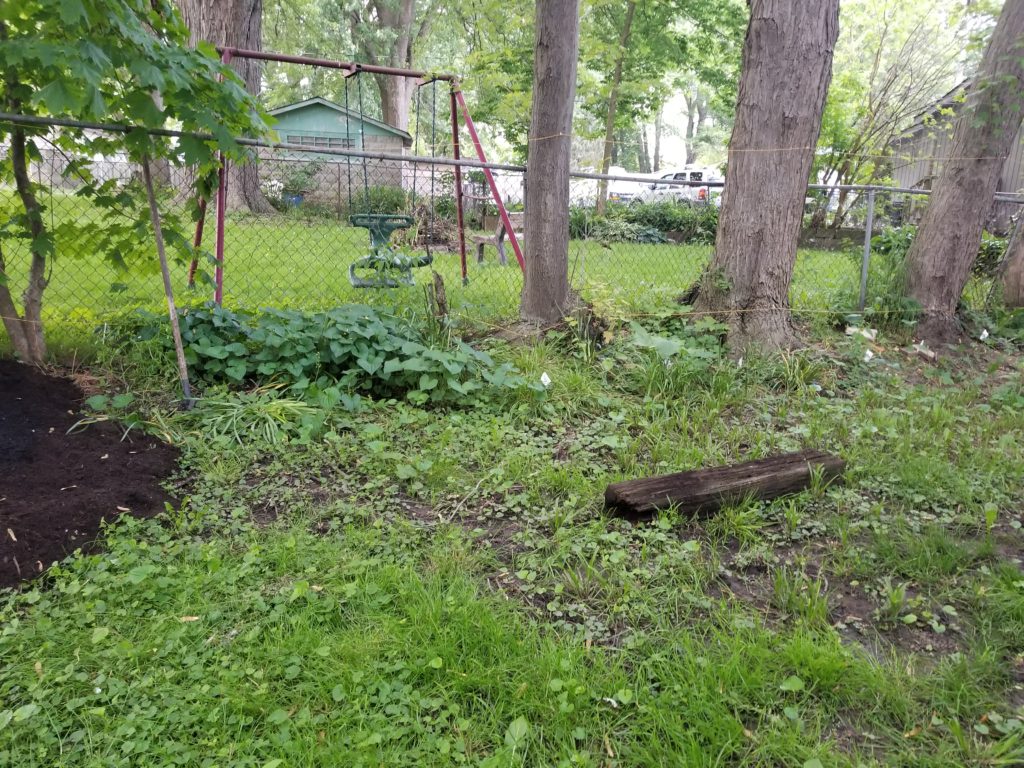
So this is where we started. 53 feet of fence-line that all looked as scruffy as this. Everything got scalped to the ground with the weed wacker. Then I spread newspapers over the scalped weeds and covered it all with 4 cubic yards of compost.
No Landscape Fabric?
I’ve never actually used commercial weed barrier, but I’ve heard so many people talk about how much of a headache they create down the road I would never consider it. Commercial weed barriers will start to drift up through the mulch, they are impossible to plant through if you want to make changes, and eventually weeds will grow on top of the weed barrier.
So I’m in the camp that does not recommend them. Better options are newspaper or cardboard.
A few layers of newspaper are easily punched through with a trowel if you need to change a planting. I’ve also heard of people using cardboard. I haven’t tried that yet but I would imagine for a planting of shrubbery it would work well. Both of those options will kill off the weeds and eventually disappear into the soil.
A Fresh Start
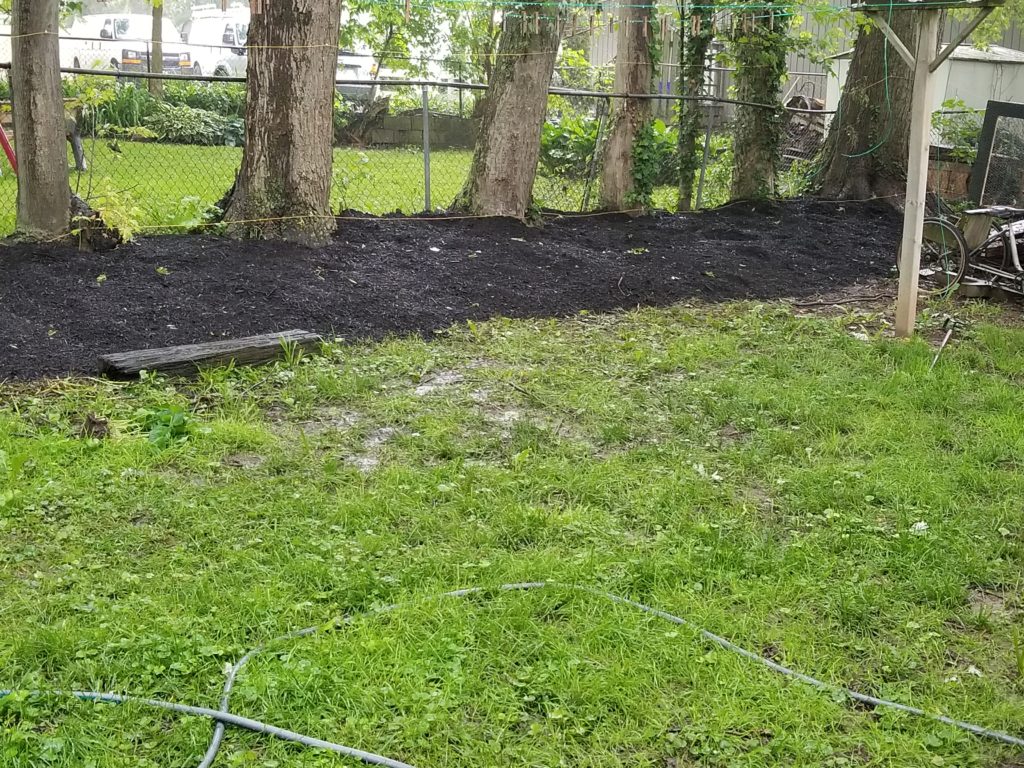
Even with nothing planted it was a huge improvement!
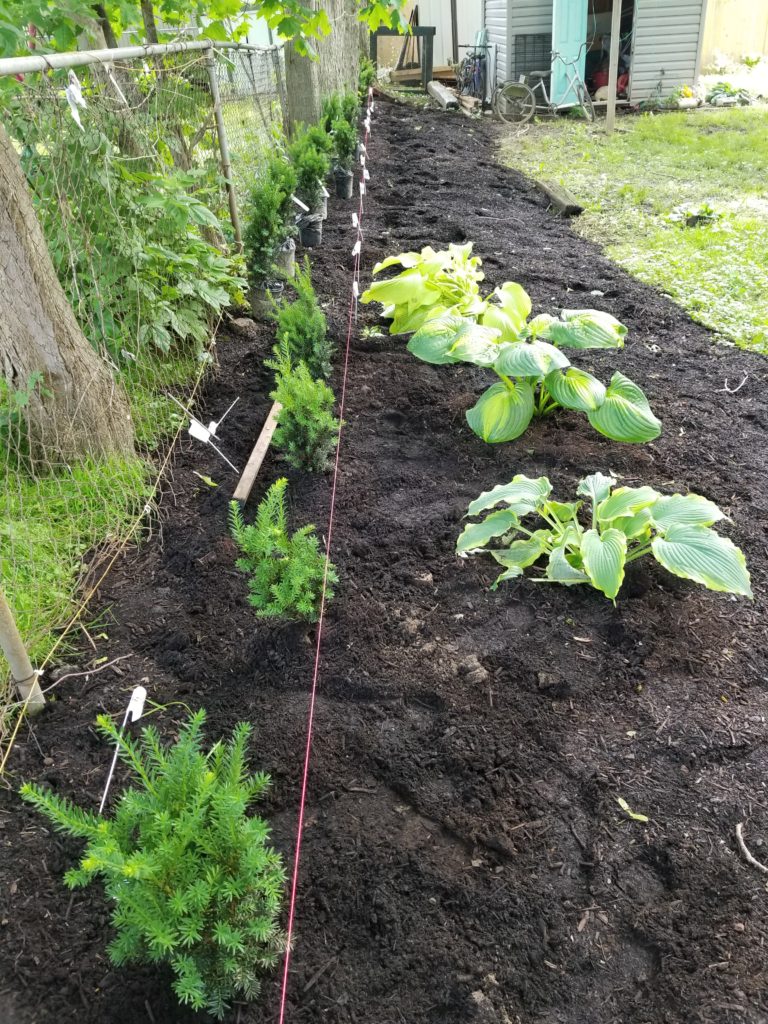
Next up, a hedge. After a bit of time spent on the internet, I went with Yew. Yew are the most drought tolerant option for shade. Things can get pretty dry under the maple trees! Small yews, because I find it easier to get a small evergreen to transplant successfully than it is a large evergreen. Also, small yews are cheaper than big yews and I needed more than one.
I wish I had taken a photo when it was just the yews planted. We’re taught to avoid straight lines in our plantings except when planting a hedge. Then you plant a hedge and find out there is something surprisingly satisfying about looking down a soldierly line of shrubs marching along in a straight line.
The yews are spaced a bit far apart for hedging, I am hoping to propagate a few more to fill the gaps.
Adding the Plants
Now that my backdrop of yews was in place it was time to start planting. Karen Chapman of Le Jardinet says…
Learning to select plant combinations rather than just individual plants, will immediately transform your garden from the onesy-twosey look to a cohesive design.
As I was planting, I tried to keep that advice in mind. I also used Excel. I have a list of all my Hosta on Excel that includes their height and spread. New divisions or new hosta don’t always show their true proportions for a few years so it’s helpful to have an idea of what they’ll become in time.
Starting at the left…
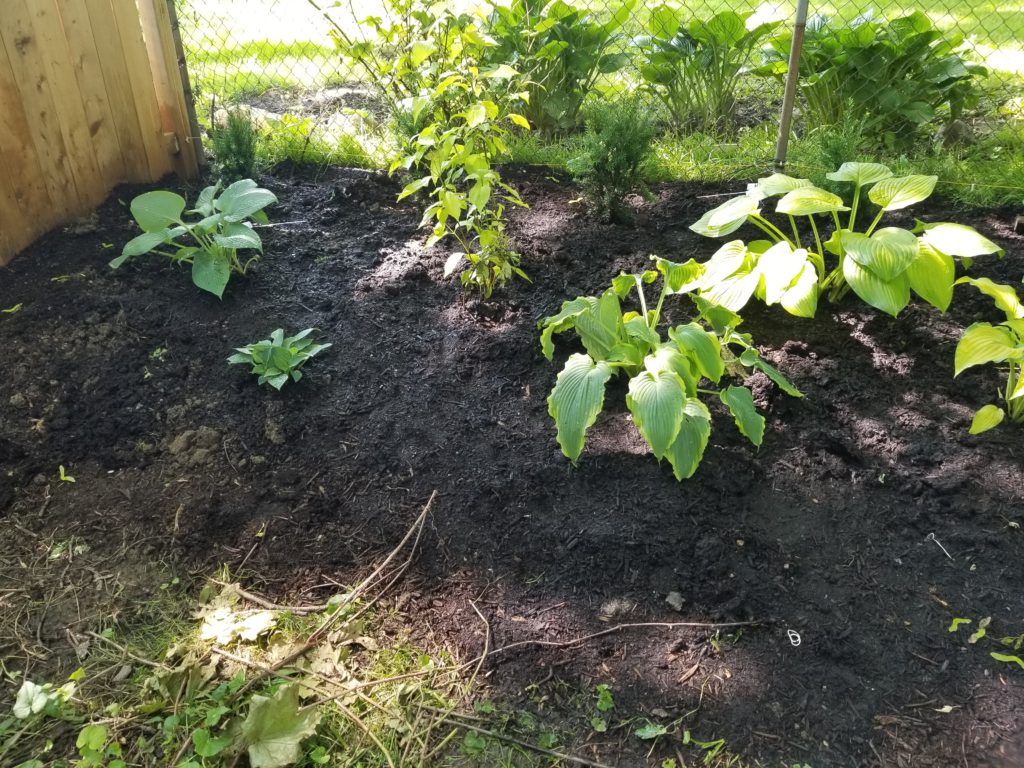
Starting in this corner is a Prairie Fire Dogwood. I have one in another location and somewhere along the line one of it’s branches touched the soil and ta-da there were two. The blue hosta in the back corner is a Hillbilly Blues. I don’t know what the smaller blue one to the front is.
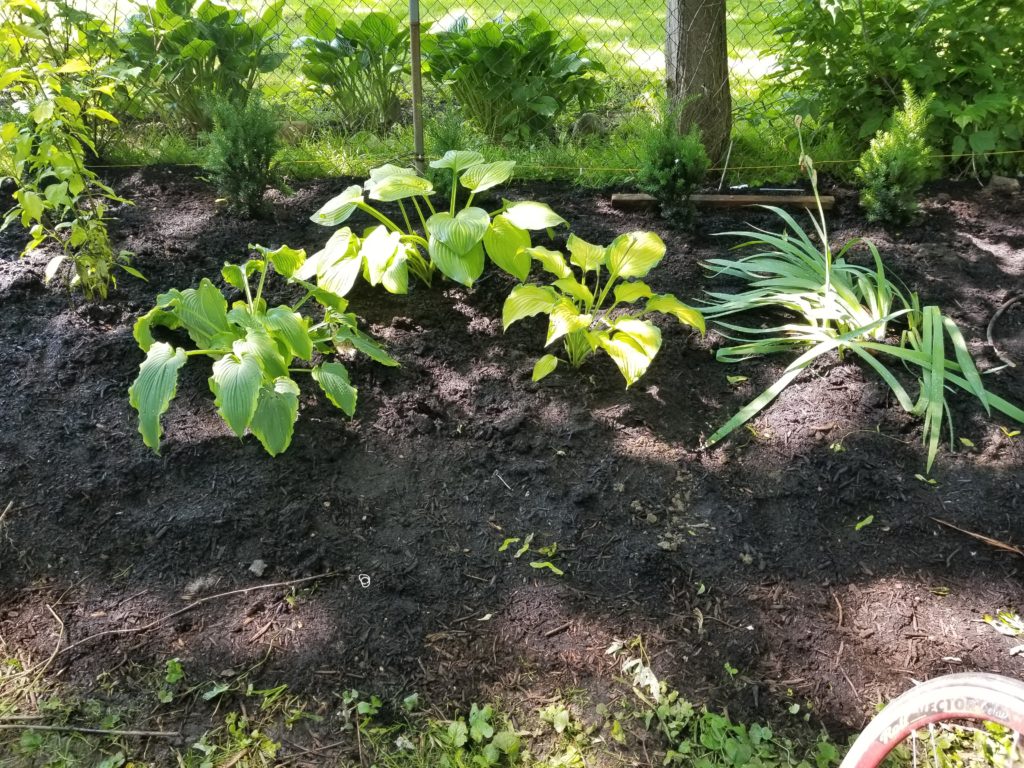
These three Hosta are clockwise from the top – Guacamole, Prairies Edge, and Spartacus with a pale blue Iris to the right.
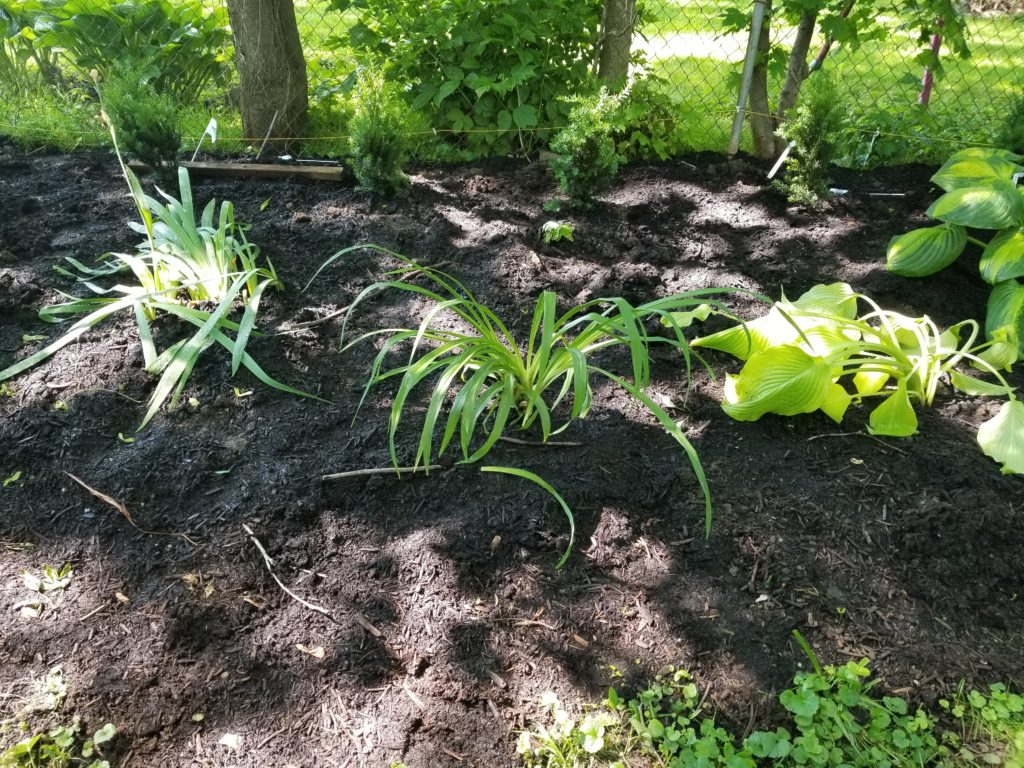
Here I’ve got a day lily (red I think) with an empty spot left for a white peony. I will probably put a planter there for now unless I manage to grab some peonies at an end of season sale.
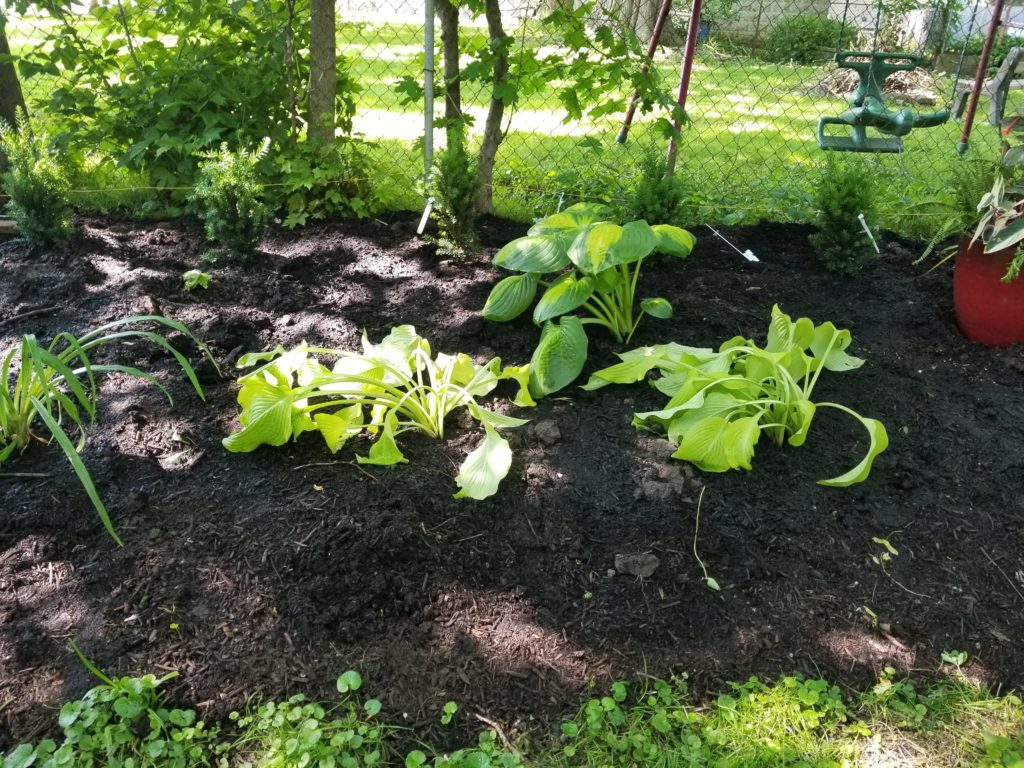
Hosta Cathedral Windows at the top with two Sun Power at the bottom.
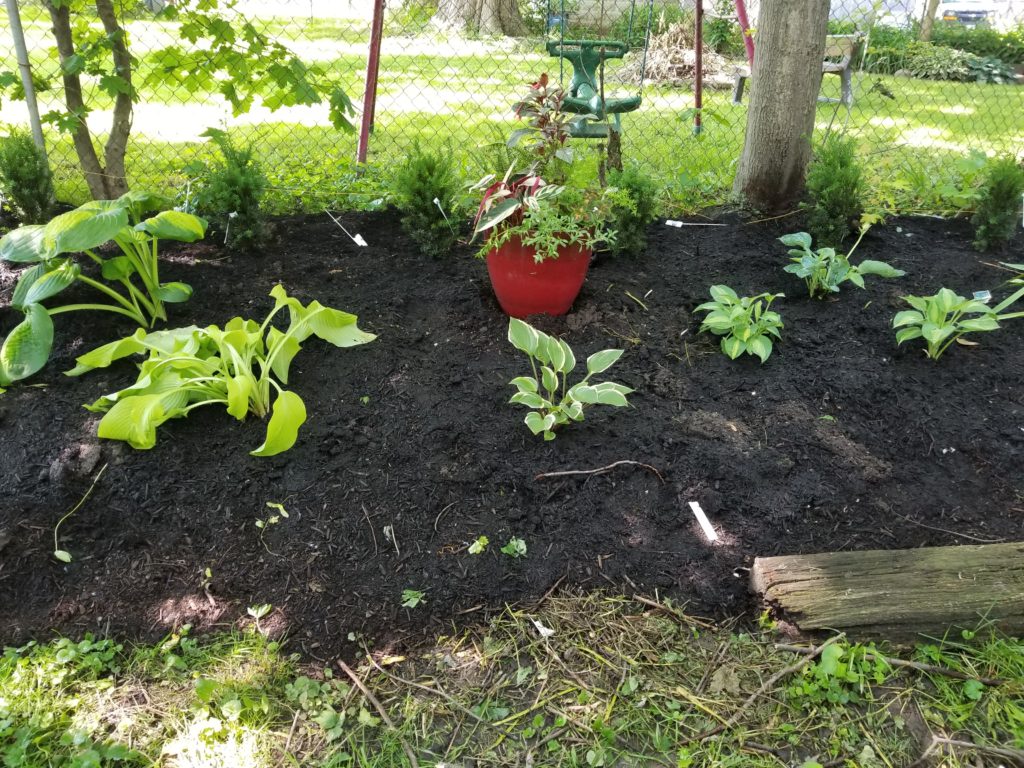
Here, I’ve got my Shade Planter in Red as a place holder for the Rose Glow Barberry I plan to put there. Nice that the planter is near the color of the shrub for planning purposes. The hosta in front has red stems. I’ll come back and put the name in once I have it.
Moving to the right…
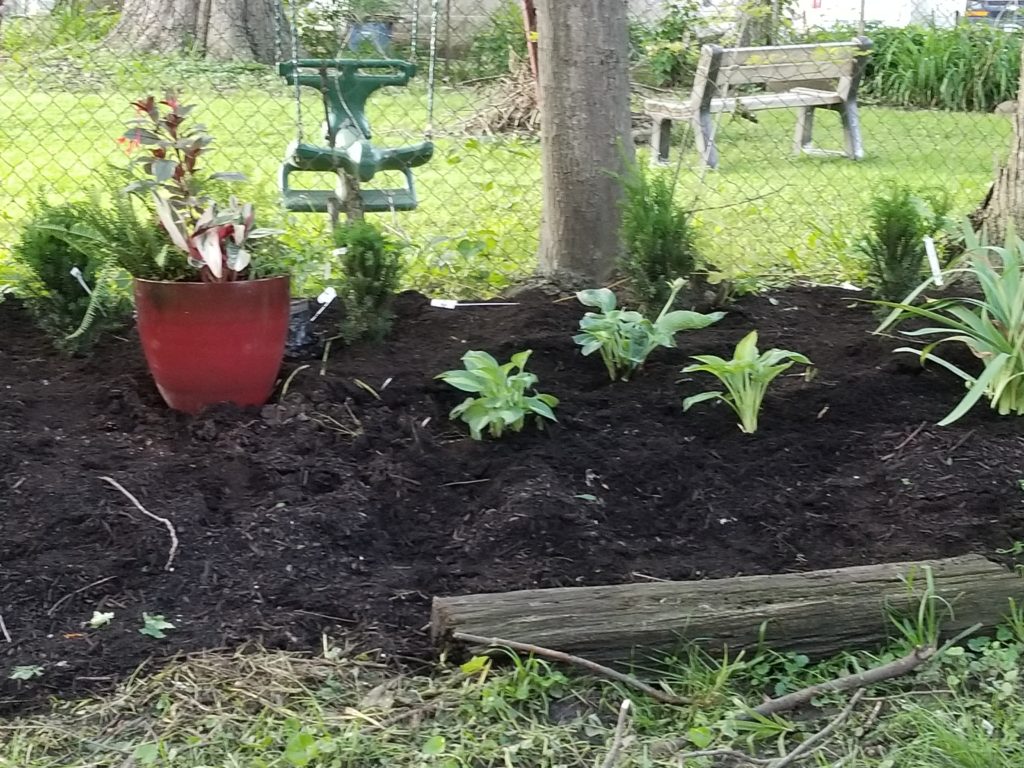
Abiqua Drinking Gourd in the back with two Strip Tease to the front. This is where the Excel spreadsheet comes in handy. Abiqua Drinking Gourd is new this year, once it’s mature it will be taller. All three will be 24″ tall. Next to them on the right is a white iris.
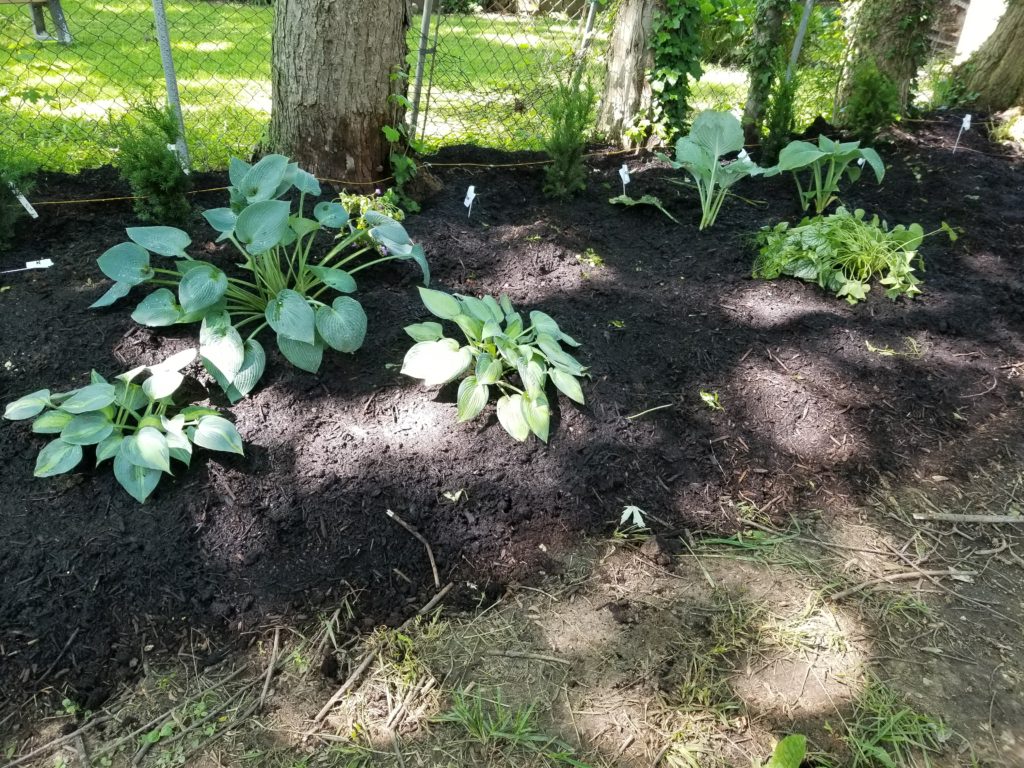
Here in the group to the left clockwise from the top – a blue sport of something or something that is fabulous. It stays blue longer into the season than any of the other blue ones I have, then a possible Golden Meadows and last – June (one of my favorites). To the right Diamond Lake, a random blue and Brunnera Jack Frost in front. The empty space between is for another Day Lily and a White Peony.
Moving & Dividing Hosta in June!
Most recommend dividing Hosta early in the spring. Dividing in spring just as the pips are emerging gives the least disruption to appearance. That said, Hosta are pretty durable. If you can live with a not so nice plant for a year they will generally pull through being divided or transplanted well into the season. Some of them won’t even look like anything happened.
Wishlist
I still have some plans for this bed.
- White peony – I think there is enough dappled sunlight to make a go of 2 or 3.
- Another Day Lily or two – they add a nice vertical element even when they aren’t in bloom.
- Hellebore – Dark green leaves and early white flowers, who wouldn’t want that?
- A Red Glow Barberry – in a small yard, shrubbery has to be carefully considered. I’ve wanted one of these for a long time so that will happen.
- A yellow Barberry – for the far end near the shed to add some bright.

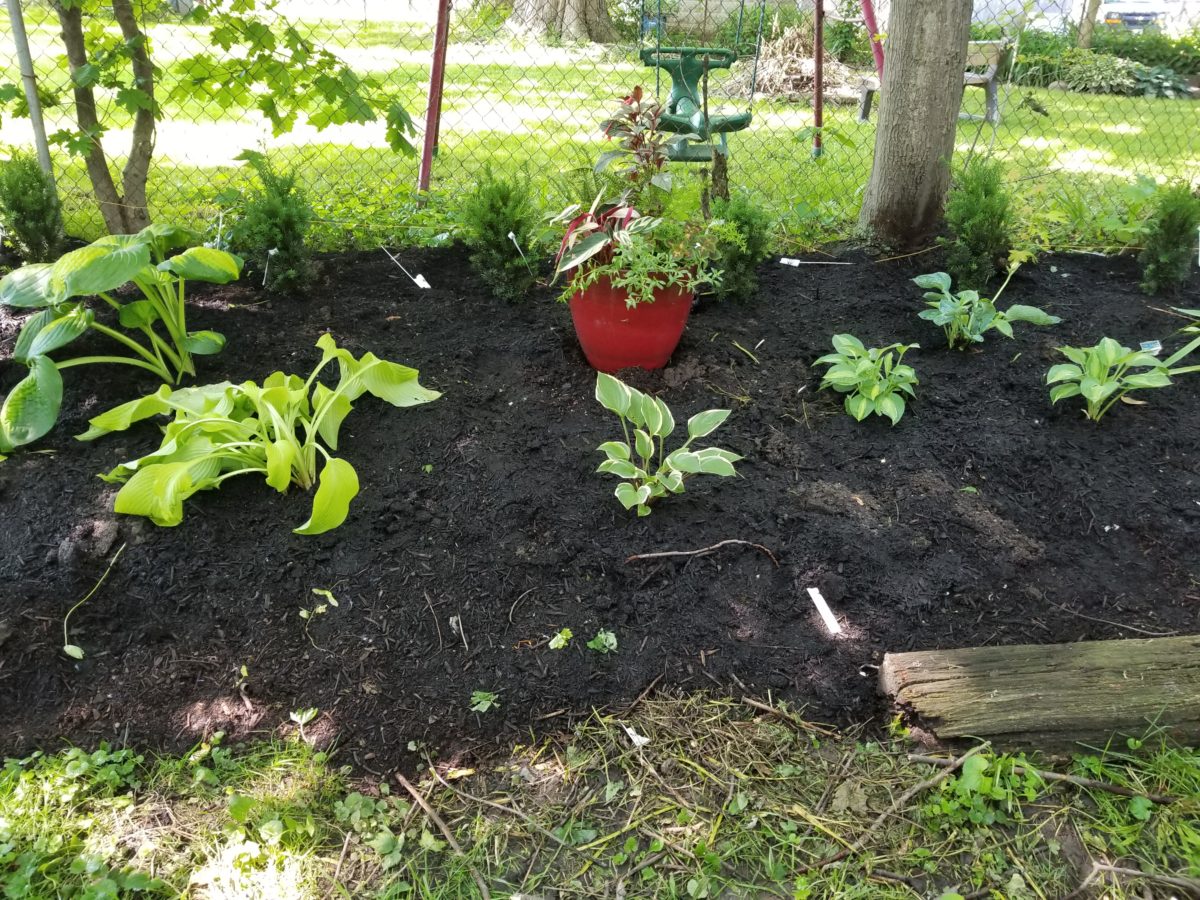

Hi Vanessa! I’m loving your new garden and shade plants! I have a few hostas in VT but none at home in FL and we have two large shaded garden areas. Sigh… eventually I’ll have the time to get more gardening at home done! Keep up the good work!
I always enjoy seeing what you plant in FL with the difference in climate. It gives me an idea of how true claims of heat tolerance are for some plants.
I would not recommend Barberry anywhere anyhow as it is extremely invasive. Some states don’t even allow it to be sold because of its invasiveness, The birds spread the seed from the berries everywhere, and it is hard to eradicate. The rest sounds good..
I did not know that! Thanks and I will definitely check up on that.